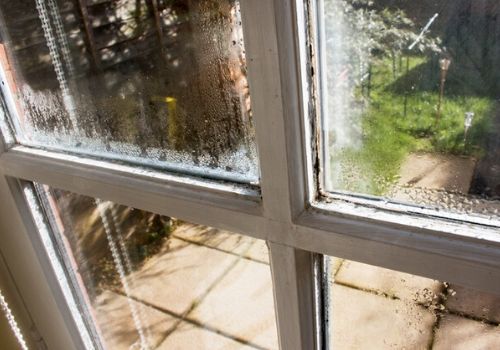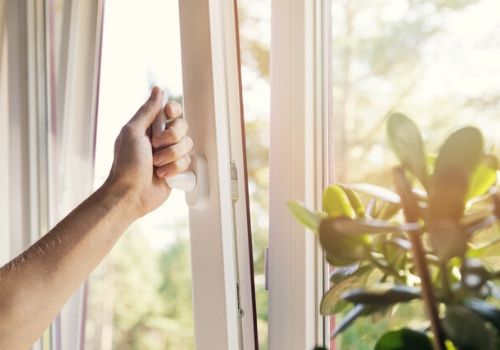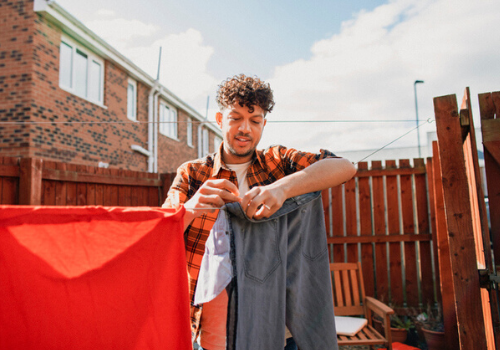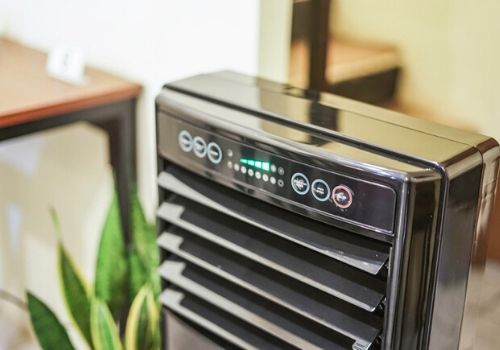Looking after and maintaining a property is one of the most important parts of living somewhere. Houses are complicated structures that need care and attention. Whether it be learning how to clear your gutters, keeping your drains clear or making sure you’ve got the perfect level of landlord insurance for your property; it’s so important to make sure you’re looking after and maintaining your home as best you can.
However, we know that you’re probably busy. As such, with the months flying by, you may not notice the weather changing until some out-of-the-ordinary damp patches start appearing on your walls and windows. If this is you, keep reading. In this article, we’re going to tell you all about how to prevent condensation on windows and walls.
What is condensation and what does it look like?
If you’ve ever been responsible for your own home, whether it be as a homeowner or tenant, you’ll probably come up against a case of condensation at some point in your life. Tell-tale signs of condensation are drops of water collecting on windows and walls, damp or wet window frames, peeling wallpaper and a damp smell.

What causes condensation on windows and walls?
Condensation happens when your home is too humid and the warm air hits cold surfaces. This leads to the air cooling quickly and forming droplets on nearby surfaces such as walls/windows.
There are lots of different causes of condensation. These can include the weather and activities that take place within your home on a daily basis.
When does condensation happen?
Condensation most commonly happens in the colder months. However, it can also happen during warmer times of the year. To help you understand, it can happen whenever the air in your home touches a surface which is cooler than the air’s ‘dew point’. This is why prevention methods are really effective when it comes to condensation.
Can condensation lead to mould?
Yes it can. After the formation of the droplets and dampening of surrounding walls caused by condensation, mould can start growing as small black dots. If you’re busy, you may not even notice the droplets until you spot the mould.
These speckles of mould can be easily (and carefully) cleaned and removed with soap and water or mould remover spray. Just be careful to read the instructions because mould remover solution tends to be quite potent. Then, once the mould has been removed, start educating yourself on how to prevent condensation from happening again.

How to prevent condensation
If you’ve noticed droplets of water or damp walls and are wondering how to stop condensation happening, we’re here to reassure you not to panic. It’s a really common part of living in a property and can be easily resolved and prevented in the future.
Because condensation is caused by various different types of activities, there are a few different steps needed in order to prevent it. Carry on reading to find out how to make sure your home is a comfortable, condensation-free environment.
1. Keep your home’s temperature consistent
As condensation happens when warm air hits a cooler surface (such as a window), a way of preventing this from happening is to keep your home’s temperature consistently warm. This will warm the surfaces of your home and assist in reducing condensation.
Don’t worry, you don’t have to keep your heating on full every day. You can just leave it on in the background, nice and steady, to make sure that there are no sudden drops in temperature. It’s also a good idea to heat the whole house rather than just one room.
This probably won’t matter for the warmer months of the year, but is a key factor in preventing condensation in the colder months.

2. Increase ventilation
Ventilation can stop moisture being trapped and leading to condensation in your house. There are a few ways you can increase ventilation.
• Leave windows open
• Choose windows with ‘trickle vents’ or have vents fitted to your existing windows. These vents naturally allow air to transfer outdoors.
• Add more ventilation. If you have a property or particular room which doesn’t have adequate ventilation, you could fit vents in doors/walls to allow air to circulate more fully.

3. Carefully place furniture
When it comes to preventing condensation, it’s important to consider furniture location.
-
Try and avoid placing furniture against an external wall
This is a wall which separates your room from the outdoors. Because of their location, external walls are naturally colder than internal walls. If you have furniture placed against that wall, it can trap moist air, react with the cold wall and therefore result in condensation and mould growth.
-
Leave a gap between furniture and walls
For the same reason as the above, if you have furniture placed against other walls, try and leave a gap so that air can circulate throughout the room.
4. Try not to dry your clothes indoors
There are various activities that you’ll probably carry out on a daily basis that can add more moisture to the air in your home. Drying your clothes on an airer/radiator is one of those activities.

Just take a look at these things you do every day and how much moisture they produce.
• 2 active people in 1 day- 3 pints of moisture produced
• Cooking/using the kettle - 6 pints of moisture produced
• Bathing/showering - 2 pints of moisture produced
• Washing clothes - 1 pint of moisture produced
• Drying clothes - 9 pints of moisture produced
• Total amount of moisture in one day = 21
This is why it’s so important to ventilate your property when carrying out an activity which produces a lot of excess moisture.
Activities like cooking/showering are helped by the use of extractor fans. But if you can’t dry your clothes outside, here are some precautions you can take:
• Dry your clothes in the bathroom with the door closed
• Make sure the extractor fan is on
• Use a tumble dryer
• If you must dry clothes in other areas of the use, open windows to allow the moisture to escape.
5. Purchase a dehumidifier
Dehumidifiers are appliances which work to lessen the amount of moisture in the air and maintain the humidity levels in your home. You could purchase a few of these and place them around your home to try and reduce the amount of moisture. Fortunately, dehumidifiers aren’t too expensive. You can usually pick one up for between £38 and £140 depending on the size you need.

6. Make sure tumble dryers are managed properly
Tumble dryers tend to release a lot of warm air. This, for obvious reasons, doesn’t help when trying to stop condensation forming.
Vented dryers
If you use a vented tumble dryer, it’s really important to make sure that the ventilation pipe feeds to the outside of your home. For example, out of the window. This will help ensure that any moisture is being released outdoors.
Condenser dryers
If you use a condenser tumble dryer (where you don’t need to use a ventilation pipe), because the dryer heats the surrounding air, this could cause condensation. For this reason, it’s a good idea to make sure that the dryer is in a well-ventilated room with enough space for the air to circulate. Many suppliers state that dryers should be in a room which sits between five and 30 degrees Celsius.
You should also regularly empty the condensation tank and make sure the dryer receives maintenance.
7. Make sure extractor fans are switched on
When you’re showering/cooking/doing anything that may release moisture into the air, extractor fans should be switched on in order to help remove the moisture. If you don’t have an extractor fan, you could consider getting one fitted. If you tend to forget to turn your extractor fan on, it could be worth switching to a fan which automatically activates when the room’s moisture levels peak.

What about short-term management of condensation?
If you’re thinking, ‘These are great tips, but what about managing the condensation problem I’m faced with right now?’, carry on reading.
The preventative measures mentioned above are also the first steps to making sure that condensation doesn’t continue in your home.
Whilst you’re busy working on the above tips, you should ensure that windows are cleared of condensation every day. You can do this by wiping the surfaces down every morning. This will stop the production of mould.
How to remove condensation from windows
• When trying to remove condensation/mould from your windows/walls, the NHS suggests wiping down surfaces with water, soap and a rag.
• Due to the mould spores, the NHS also emphasizes the need to make sure you’re protected by wearing gloves and a mask.
• When you’re finished cleaning, use a dry rag to wipe the surfaces and remove moisture.

Carrying out this process daily is really important to remove the condensation that’s starting to build. Combining this daily task with the above long-term measures should, over time, help prevent condensation within your home.


